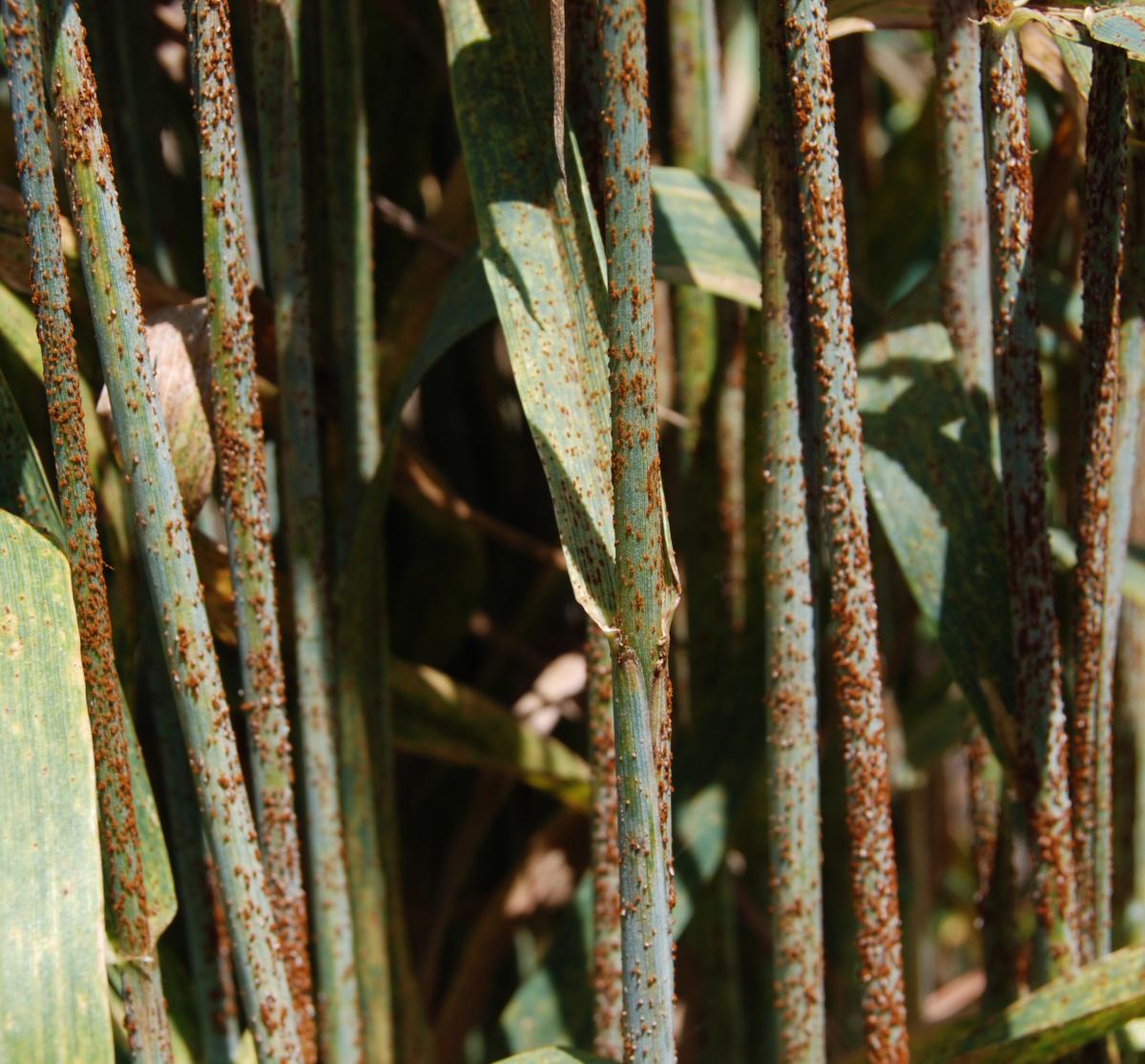
A global team led by researchers in Australia has achieved a dramatic breakthrough in dealing with stem rust, a fungal pathogen that causes widespread damage to wheat.
For the first time, agricultural scientists have been able determine what s going on at the gene level of the rust pathogen, allowing them to quickly detect its presence in a crop so that farmers can rapidly respond to the threat with fungicides.
Previously, the testing process required greenhouse facilities and took several weeks, by which time the pathogen might have destroyed a farmer s crop or spread to other fields. Now technicians can identify the presence of the pathogen in a matter of hours, using a DNA lab test.
Though the research has immediate benefits for farmers, it also holds the promise for greater insight into a destructive and highly adaptive pathogen that has plagued wheat farmers since perhaps Biblical times.
We ve been trying to understand how a rust pathogen takes over its host to hijack the photosynthesis process and disrupt seed production, said Professor Robert Park, a University of Sydney plant pathologist who has studied the rust pathogens for more than 30 years. Now that we ve unlocked the door and gotten into the house, we want to see what s going on and how the pathogen is robbing farmers of their yield.
For the past 80 years, plant breeders have been developing wheat varieties that are high-yielding and inherently resistant to rust. Though this breeding approach has been extremely successful in greatly reducing crop losses due to stem rust, the pathogen is very clever, Park said, and has developed many ways of adapting genetically to this resistance.
Once the pathogen is able to overcome the resistance, it can spread like a raging brush fire, devastating a crop within weeks and infecting neighboring fields as it s carried on the wind. As a result, farmers must be prepared to respond quickly with an application of fungicides. The DNA testing will make it much easier for farmers to immediately determine whether they actually need to use expensive fungicides.
Park said the accelerated testing process will help to prevent significant crop losses of wheat, which provides 20 percent of the world s food. The demand is projected to increase a lot, he said. We don t want to cut down more forests to plant crops. We want to stabilize production without new inputs, and this research will contribute to that goal.
The Cornell University-based Delivering Genetic Gain in Wheat Project welcomed news of the research breakthrough. “The identification of the AvrSr50 gene provides an excellent opportunity to better understand the complex interaction between the wheat stem rust pathogen and its host, said Maricelis Acevedo, the project s associate director for science. The lessons learned from this study, as well as the scientific knowledge acquired, will serve as a great stepping stone to develop and deploy durable rust resistance in wheat varieties in farmers fields.”
This new method of genetic testing will also facilitate pathogen detection in crops being grown in developing nations, which often lack access to the greenhouses required by previous testing procedures. Though it does require some specialized equipment, people can be easily trained to carry out the DNA test, Park said.
Farmers around the world also can use the services provided by the global wheat rust monitoring initiative RustTracker.org.
The research is a collaboration between the University of Sydney, CSIRO, Rothamsted Research in the United Kingdom, the University of Minnesota and the United States Department of Agriculture.
One of the real buzzwords in science is cross-disciplinary research, Park said. This paper we just published is a great example of that. There is no way any one of us could have achieved this alone.
The research findings will be published Dec. 22 in two companion articles in Science.
